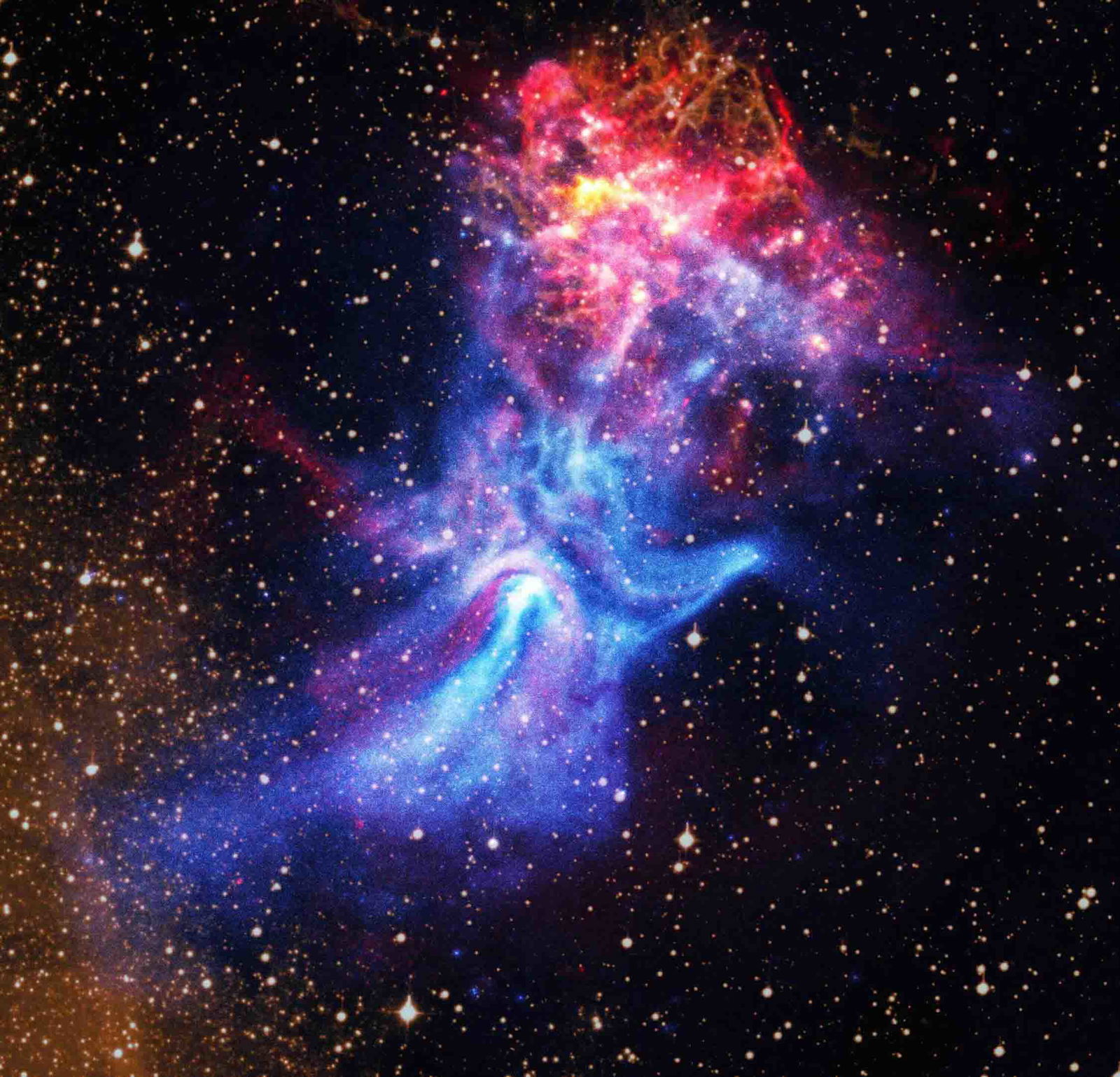Astronomers have now combined radio data with X-ray images to produce a stunning new view of the pulsar B1509-58 surrounded by its nebula, which appears to resemble a giant hand reaching for the pulsar.
NASA’s Chandra X-ray Observatory first released an image of this unusual nebula in 2009, sparking years of continued observation. The latest composite combines Chandra’s X-ray data with radio data from the Australian Telescope Compact Array (ATCA), providing fresh context and perspective on the nebula’s distinctive shape.
B1509-58
The pulsar at the center of the image measures just 12 miles across, yet it powers the vast MSH 15-52 nebula, which stretches some 900 trillion miles. From Earth’s vantage point, the nebula appears to take the form of a human hand, with the palm facing us and the fingers extending upward toward B1509-58.
The composite assigns ATCA’s radio data in red, while Chandra’s X-ray emissions appear in blue, orange, and yellow. Optical hydrogen gas imagery is shown in gold, with overlapping radio and X-ray regions displayed in purple. Background star field data complete the image, along with the visible remains of the supernova remnant RCW 89, which gave birth to the pulsar. Researchers released two versions of the image: a clear composite and a labeled version identifying its key features.
The Composite Image
The pulsar formed when a massive star exhausted its nuclear fuel and collapsed, triggering a supernova that ejected its outer layers into space. B1509-58’s magnetic field is estimated to be 15 trillion times stronger than Earth’s, making it one of the galaxy’s most powerful electromagnetic objects. This immense force propels electrons and other energetic particles outward, creating the MSH 15-52 nebula. The pulsar itself rotates nearly seven times per second.
The new composite reveals intricate details of the nebula, including filaments aligned with its magnetic field. These filaments, highlighted in a supplementary image as short white lines, may be the result of the pulsar’s particle wind colliding with supernova debris.

By comparing the radio and X-ray data, astronomers noted key differences. Radio waves fail to capture several prominent X-ray features, including the inner parts of the nebula’s “fingers” and a jet at the bottom of the image. This discrepancy suggests that highly energetic particles may be leaking from a shockwave near the pulsar and streaming along magnetic field lines, producing the structures in a way akin to a sonic boom.
The radio data also extend beyond the X-ray emissions and appear in irregular clumps, possibly signaling interactions with dense hydrogen gas clouds. However, not all features are easily explained. In the upper-right portion of the image, X-ray emissions form a sharp boundary with no corresponding radio signal—an anomaly, since supernova blast waves typically glow brightly in both.
An Unusual Cosmic Structure
The nebula and supernova are both behaving strangely, displaying features not typically seen in such young sources. Researchers still have many questions about how these unusual structures initially formed and evolved into the ones we observe today.

The complex relationship between he pulsar and supernova debris will require extensive work to unravel and develop a complete understanding of what is occurring.
The paper, “High-resolution Radio Study of Pulsar Wind Nebula MSH 15–52 and Supernova Remnant RCW 89,” appeared in The Astrophysical Journal on August 20, 2025.
Ryan Whalen covers science and technology for The Debrief. He holds an MA in History and a Master of Library and Information Science with a certificate in Data Science. He can be contacted at ryan@thedebrief.org, and follow him on Twitter @mdntwvlf.
